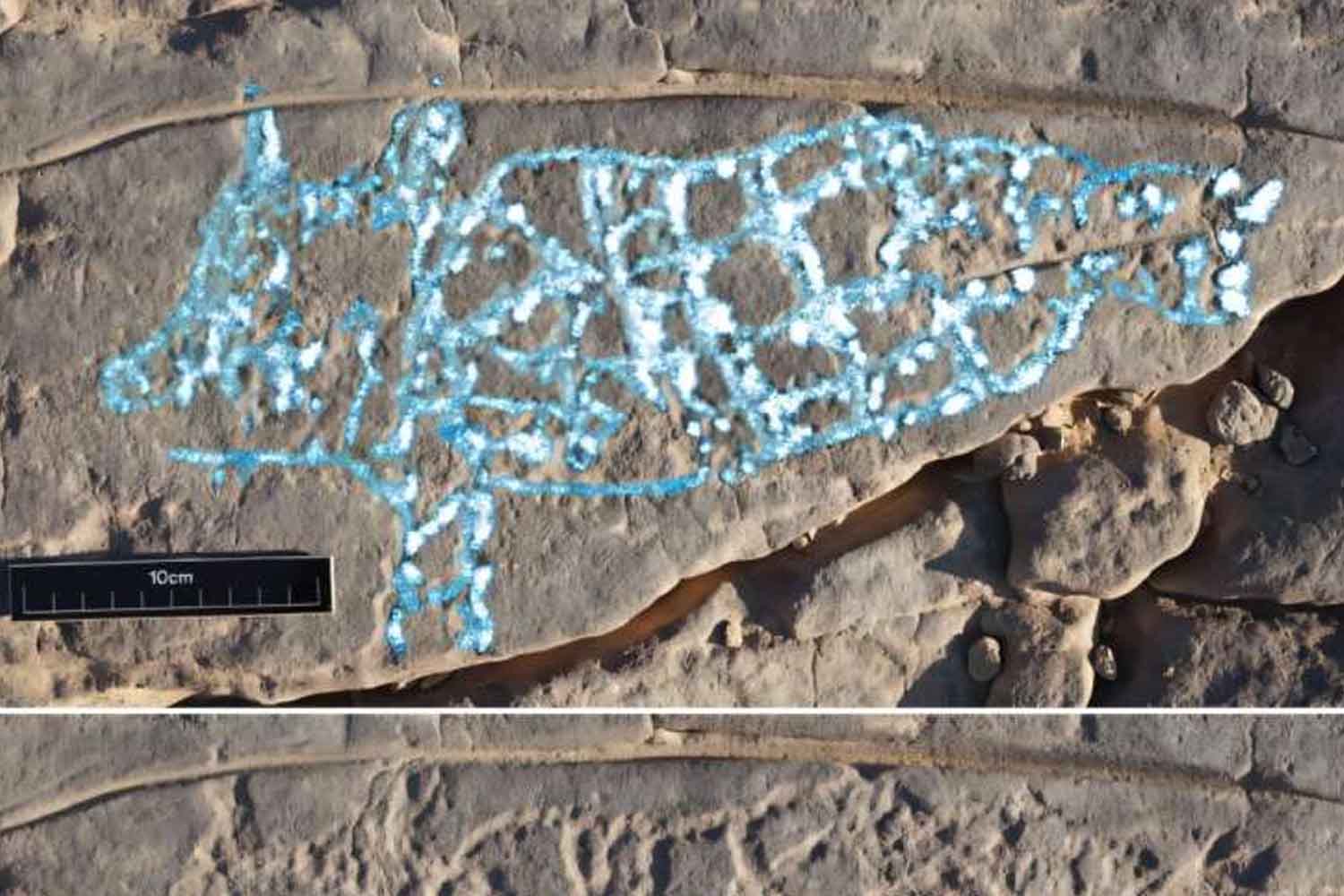A unique petroglyph discovered in Egypt that could represent Capricorn, a zodiac symbol that reveals the meeting between local traditions and Greco-Roman influences

©The Journal of Egyptian Archaeology (2024)
An unusual discovery has caught the attention of archaeologists and history enthusiasts: a unique petroglyph in the el-Hosh region of Egypt might depict the zodiac sign Capricorn. This hybrid figure, resembling a goat and a fish, was uncovered by a research team led by Dr. Linda Evans from Macquarie University, and their findings were published in the Journal of Egyptian Archaeology. This is an exceptional depiction because the signs of the zodiac have never been identified in Egyptian rock art before.
Dr. Frederick Hardtke, the one who found the image during an archaeological expedition, said:
“The figure was found next to another equally rare image—a chameleon. Together, they form an extremely enigmatic panel.”
Dr. Evans, however, acknowledged the potential connection to astrological imagery and so delved deeper into its analysis:
“Initially, we classified it as a mythological creature, but the more I investigated, the more I realized it might represent Capricorn, a zodiac symbol.”
Diverging from Egyptian artistic traditions
What makes this depiction especially interesting is that it is so unlike the traditional Egyptian art. Hybrid animals, like the well-known Seth animal, were typically created by taking specific characteristics of different animals to represent specific powers or attributes. In this instance, the image is so close to the zodiacal “goat-fish” that scholars believe it was not Egyptian in origin but a figure brought into the culture through outside influences.
From Mesopotamia to Egypt: Capricorn’s journey
Capricorn originates from Mesopotamia, where the god Enki (Ea to the Akkadians) was associated with water and constellations. Over time, this mythological figure evolved into the stylized “goat-fish,” as seen in cylinder seals dating from 2112–2004 BCE.
It gradually extended to Greece, then Rome, reaching the Egyptians at around 300 BCE of the Ptolemaic period, where signs of the zodiac would be used by the Egyptians in the decorations of temples like Armant, appearing later in the coins or funerary ornaments during the Greco-Roman age.
It has been dated by experts as coming from the 1st century BCE and the 2nd century CE, during which Greco-Roman influence in Egypt was at its peak. The Capricorn carved there has a linear tail, suggesting it pre-dates the coiled tail version of the 2nd century CE.
Why a zodiac symbol in the desert?
Scholars have a number of theories that explain how such a zodiac symbol ended up on a rock in the desert. It might have been an astronomical reference, perhaps used for nighttime navigation by the region’s residents. Alternatively, it may have been carved by an individual inspired by astrological symbolism, perhaps based upon a coin or another illustration seen elsewhere. As Dr. Hardtke explains:
We must not forget that the quality and frequency of Egyptian rock art declined after the invention of writing. The petroglyph may have been crudely executed, perhaps copied from memory.
The proximity of the Capricorn petroglyph to the chameleon carving makes it probable that both could have been executed at the same time, perhaps by one person. This fact strongly asserts that during the Greco-Roman period, Egypt was a melting pot, a place where many artistic influences converged. Even for local populations, foreign signs began to be part of their so-called evolving cultural identity.
Source: Journal of Egyptian Archaeology
